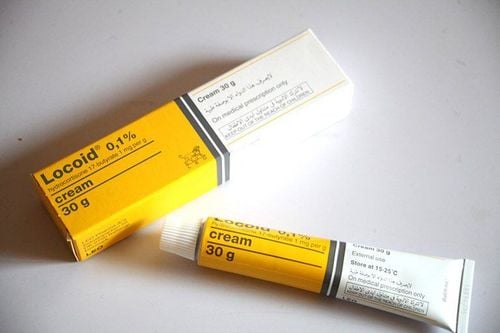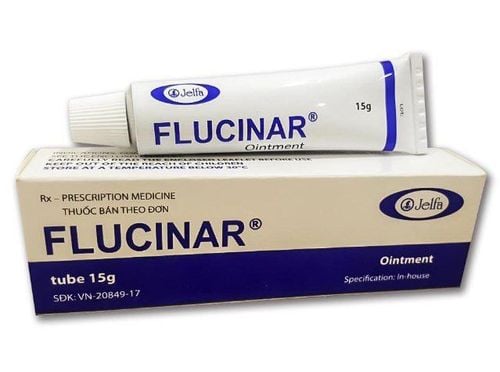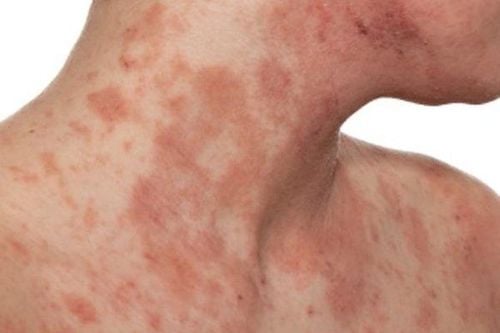This is an automatically translated article.
The typical symptom of atopic dermatitis in adults is raised lichenoid hyperplasia on the surface of the skin, often accompanied by extreme dryness and itching. Adults with atopic dermatitis are often "disturbed" a lot because the disease is easy to recur, affecting aesthetics.1. Overview of atopic dermatitis in adults
Atopic dermatitis (English name is atopic dermatitis) or atopic eczema, atopic eczema, chronic lichen simplex, eczema, ... is a common disease in the community. This is not a life-threatening disease but greatly affects the quality of life of the patient, causing trouble due to prolonged and frequent recurrence. Because the disease causes a lot of itching, frequent scratching makes the disease worse, leading to a vicious cycle.
Atopic dermatitis can occur at any age, in which the disease mainly appears in children under 2 years old. More than 60% of children with atopic dermatitis present in the first two months of life. Atopic dermatitis in adults is usually a continuation of childhood and adolescence, and very rarely has an adult onset. The prevalence of atopic dermatitis in adults has not been accurately reported, with no clear difference between the sexes. Atopic dermatitis has a genetic nature, parents with atopic dermatitis increase the likelihood of children getting the disease many times.
2. Why do adults get atopic dermatitis?
The cause of atopic dermatitis in adults is not fully understood. Many experts agree on the relationship between the disease and the patient's existing allergies. Adults with atopic dermatitis may also have allergic-related diseases such as bronchial asthma, food allergies, contact dermatitis, and urticaria. Risk factors for atopic dermatitis have been identified that increase the likelihood of disease and increase the recurrence rate, including:
Seasonal change, peak in autumn and winter. House dust, mites and some insects. Psychological stress comes from life, work and study. Acute infectious diseases that weaken the immune system. Food allergies such as eggs, milk, beans, fish. Risk factors do not directly cause the disease, but they can only increase the likelihood of getting the disease or promote a faster rate of disease development. Many people possess the above risk factors but do not develop atopic dermatitis, conversely some cases of atopic dermatitis in adults are not associated with any risk factors for the disease.

Căng thẳng tâm lý là yếu tố nguy cơ gây viêm da cơ địa ở người lớn.
3. How does atopic dermatitis in adults manifest?
Adult atopic dermatitis is a continuation of atopic dermatitis in children and adolescents. Atopic dermatitis in children under 2 years old usually appears for the first time when the child is 3 months old with many blisters on a red skin background in many places around the face such as cheeks, forehead, chin and around the nose and mouth. sometimes spreads down the body and limbs of the child in severe cases.
In the period from 2 to 12 months of age, the typical symptoms of atopic dermatitis change from blisters on a red background to thick, lichenified patches of skin that protrude from the surface of the skin and are very itchy. Lesions are concentrated in large patches or scattered in many locations in the body with a wider range of effects including wrists, elbows, knees and eyelids on one or both sides of the body.
Clinical symptoms of atopic dermatitis in adults have many similarities with those of children older than two years old. The disease is characterized by lichenified patches of skin, red papules, raised from the skin surface, scattered or concentrated in places such as elbows, knees, nipples, around the anogenital area. . This type of lesion often causes a lot of itching, scratching causes many scratches and increases the risk of infection.
In the case of atypical adult atopic dermatitis, the patient also has to experience other symptoms such as dry skin, dermatitis on the soles and palms, eczema and thickening of the skin around the hair follicles and hair follicles. . In addition, some other signs such as conjunctivitis, allergic rhinitis, asthma may also accompany other signs of atopic dermatitis. Atopic dermatitis can go away on its own when you reach adolescence, the remaining cases will take place for a long time if not properly treated.
Establishing a diagnosis of atopic dermatitis in adults usually only needs to be based on typical clinical symptoms such as lesion characteristics, location of lichenified plaques and personal and family medical history of the patient.
4. Treatment of atopic dermatitis in adults
Treatment of atopic dermatitis is not an easy task because the disease tends to be long-lasting and appear repeatedly. The principle of treatment of atopic dermatitis in adults must simultaneously ensure the following factors:
Local and systemic drug treatment. Change the treatment according to the stage of the disease. Solve other diseases related to the body. Prophylaxis of recurrent atopic dermatitis. Atopic dermatitis is indicated for the use of topical drugs to relieve skin symptoms. In the acute and subacute stages, physiological saline, Jarish solution or lake solution are selected topical drugs to keep skin lesions clean and prevent superinfection. When atopic dermatitis in adults progresses to chronic, corticosteroids with cream or ointment preparations are used in combination with drugs that have moisturizing and emollient effects.
Systemic treatment is indicated in parallel with local treatments to bring good effect and prevent disease recurrence. Antihistamines are medicines used to relieve itching on the skin. When there is superinfection in keratolytic lesions on the skin surface, the patient needs to use specific antibiotics, preferably by fresh examination or cultures taken from these lesions.

Khám và tư vấn điều trị viêm da cơ địa dị ứng ở người lớn rất quan trọng để dự phòng bệnh.
The doctor also needs to advise the patient on how to use the drug and some things to keep in mind to avoid recurrence of the disease such as limiting scratching and rubbing to injure the skin; Eliminate suspected allergens for the patient.
At Vinmec International General Hospital, there is a package of examination and advice on treatment of atopic dermatitis to help customers assess the overall condition of the disease and advise on measures to help prevent recurrence.
When registering for a package of examination and consultation for treatment of atopic dermatitis, customers will receive: Dermatology specialist examination. Perform tests such as: quantitative IgE, fresh mycobacteria, specific IgE quantification with respiratory allergens - food (Panel 1 Viet), test Rida Allergy Screen (panel 1)...
Please dial HOTLINE for more information or register for an appointment HERE. Download MyVinmec app to make appointments faster and to manage your bookings easily.













